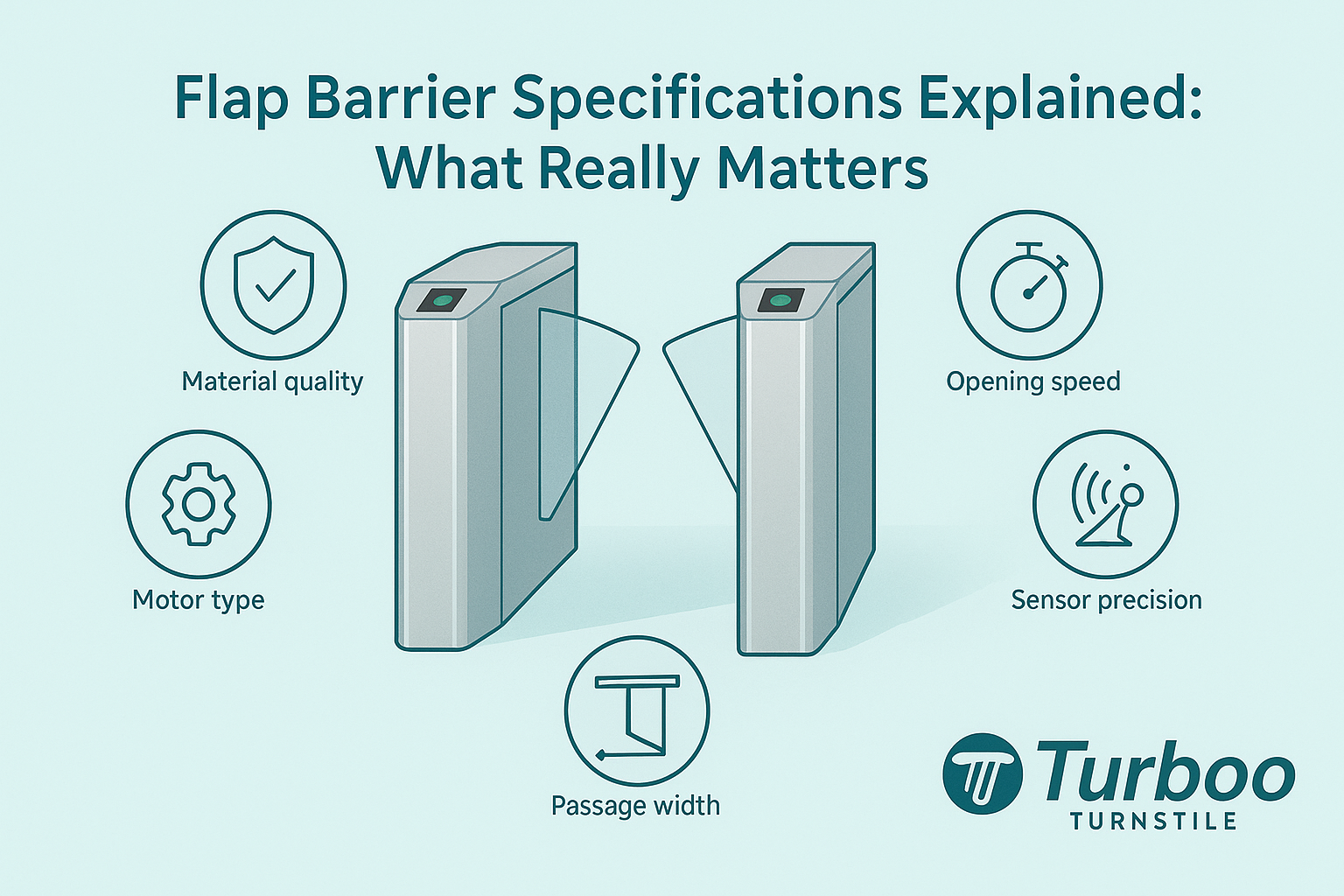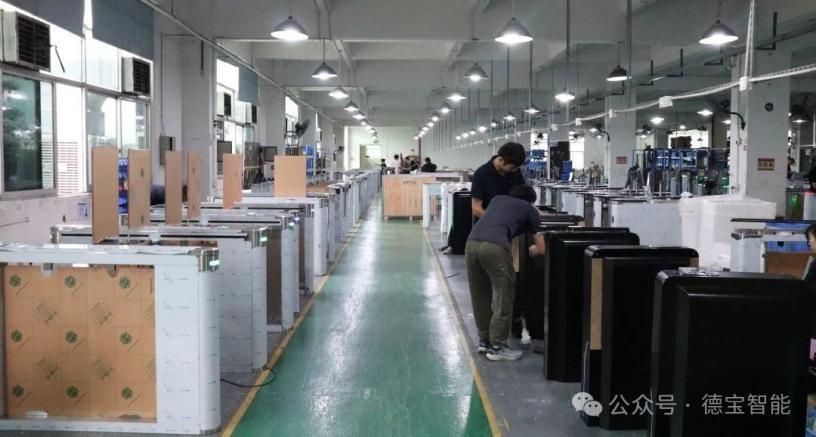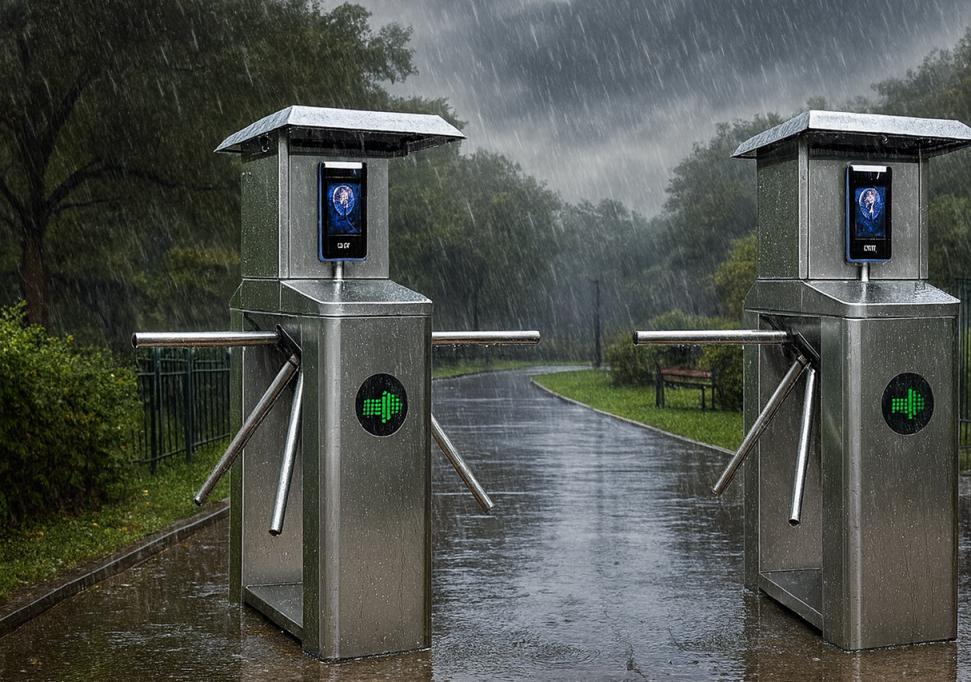Flap Barrier Specifications Explained: What Really Matters


Flap barriers are essential tools in modern access control. They combine physical security with smooth, user-friendly operation. But buying the right one isn’t always easy. The biggest challenge most buyers face? Understanding the specifications. These technical details can make or break your access control setup. Yet too often, they’re overlooked or misunderstood.
Here’s the truth: flap barrier specifications aren’t just filler text in a product brochure. They tell you how the barrier will fit, how fast it will operate, and whether it can handle the demands of your environment. These specs include everything from flap opening speed and motor type to dimensions, power needs, and durability ratings.
Many procurement teams and facility planners struggle with this. The terms feel overly technical. Product details are hard to compare. And sometimes, the flashy features overshadow the core performance metrics. That’s where mistakes happen—buying a sleek-looking unit that doesn’t fit the entry space, breaks down often, or fails under high traffic loads.
This article is designed to clear the confusion. We’ll walk through the most critical specifications, explain what they mean in plain language, and show you how they affect real-world use. You’ll learn how to assess barrier features not just by how they sound, but by how they actually perform. By the end, you’ll feel confident navigating any flap barrier spec sheet—and making smarter, safer purchase decisions.
What Is Flap Barrier Dimensions
When reviewing flap barrier specifications, dimensions are the first thing to check. These numbers might look simple, but they directly impact installation and usability. If your barrier doesn’t fit the available space or creates a traffic bottleneck, no amount of smart features can fix the problem.
Most flap barriers come in standard widths ranging from 600mm to 900mm per lane. Wider units are available for accessibility compliance, like for wheelchair users or large packages. The typical height varies between 980mm and 1200mm. Lower barriers may look more open and sleek, but higher ones add extra security and help prevent jumping over.
Why does this matter? Because your site layout dictates what kind of barrier you can install. Hallway width, wall spacing, nearby doors, and furniture placement all influence the usable area. If the unit is too wide, you’ll reduce flow or violate fire exit codes. If it’s too narrow, you’ll create crowding and slow down movement.
Beyond size, spacing between cabinets also plays a role. The gap must match the flap size and opening mechanism. If misaligned, it could lead to gaps in coverage or mechanical errors. This is why precise measurements—and even custom dimensions—are often required for new builds or retrofits.
To get the right fit, always cross-reference the site layout with the barrier’s product details. If you’re unsure, vendors often offer layout simulations or on-site surveys. You can also consult the buying guide for flap barriers, which includes layout planning tips. When dimensions match your environment, everything else works better.
Flap Opening Speed and User Flow Efficiency
Speed might seem like a small detail, but it’s one of the most important flap barrier specifications. It directly affects how many people can pass through per minute, and whether your entry system causes delays or keeps people moving smoothly.
Most high-performance flap barriers open and close in under 0.5 seconds. That’s fast enough to keep a steady flow during rush hour but not so fast that it compromises safety. Entry speed depends on both the motor power and the flap material. Lighter flaps move quicker, but sturdier ones handle more wear. Choosing the right balance depends on your traffic volume and risk level.
Why does speed matter so much? Imagine a corporate building with 300 employees arriving in a 15-minute window. If the flap takes a full second to open and close, each person takes longer, and the queue builds. Multiply that by three lanes, and the delay adds up. Now compare that to a 0.3-second barrier—people move faster, tension drops, and your security team stays relaxed.
But there’s a trade-off. Faster isn’t always safer. If the flaps close too quickly, they can bump users or jam during unexpected stops. That’s why good systems come with adjustable speeds and smart sensors that adapt based on flow and obstruction detection. It ensures the flap only moves when it’s safe and doesn’t trap or surprise the user.
The speed rating should always be tested under load, not just on paper. That means checking how it performs during real peak times. Performance should remain consistent regardless of temperature, power fluctuations, or heavy use. If you want high throughput with no sacrifice in safety, don’t ignore the flap speed—it’s one of the best indicators of system quality.
Motor Type and Mechanical Reliability
A flap barrier’s motor is its engine. It powers the movement, controls the speed, and determines the system’s lifespan. That’s why reviewing the motor type is essential when studying flap barrier specifications. Different motors mean different levels of performance, maintenance needs, and noise.
The most reliable systems use brushless DC motors. These motors are durable, efficient, and quiet. They handle frequent stops and starts without overheating, making them ideal for high-traffic environments. Compared to brushed motors, they have fewer wear parts, which means less maintenance and longer operating life.
Another option is servo motors. These provide even more precise control over motion, allowing for smoother and faster flap movements. They’re great for facilities that demand high-speed access with very low noise—like libraries, museums, or corporate HQs. However, they can be more expensive and may require more careful installation.
Motor specs aren’t just about movement—they affect power consumption too. An energy-efficient motor reduces running costs over time. It also ensures the system performs well under backup power if the main supply fails. Some systems even come with thermal protection to avoid damage in case of overheating.
When assessing motor reliability, look for specs like torque rating, operating temperature range, and life cycles. A good motor can run for several million cycles before needing replacement. That’s years of reliable service, especially if supported by proper maintenance.
Want to know how motor design ties into other barrier features? Visit the flap barrier functions breakdown for a deeper look at internal mechanisms. Ultimately, the motor is more than a part—it’s the heart of your flap barrier. Choosing the right one means your system runs smoother, lasts longer, and causes fewer headaches.
Power Supply Requirements
Power might not be the most glamorous part of flap barrier specifications, but it’s critical. If your system isn’t compatible with your site’s electrical infrastructure, or if it draws too much energy, you’ll face costly delays and inefficiencies.
Most flap barriers operate on AC input ranging from 100V to 240V, supporting both domestic and international installations. The typical power consumption hovers between 60W to 150W per unit during operation. Standby mode usually drops this significantly, saving energy when the system isn’t in use.
The real question is: how stable is your power supply? Inconsistent voltage can damage internal circuits or cause motors to behave erratically. That’s why better systems include voltage regulation and surge protection. If your building has power stability issues, look for units with these safeguards built in.
Then there’s backup power. During outages, do the flaps stay locked, or do they open automatically? In emergency scenarios, barriers should open freely to allow safe exit. This is managed through internal battery packs or connection to UPS systems. Make sure your power plan includes these options—especially for high-security or high-traffic sites.
Lastly, consider energy efficiency. Today’s barrier systems are designed to minimize energy use without compromising performance. Some even use smart sensors to switch components off when idle. For buyers interested in sustainability, this can be a key selling point—and a long-term cost saver.
User Capacity Per Minute
One of the most practical flap barrier specifications you’ll need to consider is user capacity per minute. This tells you how many individuals the barrier can process in a given time. It directly influences your site’s efficiency, especially during peak hours. Whether it’s employees arriving at the office or passengers catching a train, high-capacity systems reduce delays and crowding.
Typical user capacity ranges from 25 to 40 people per minute for each lane, depending on the flap speed, authentication method, and user behavior. Faster flaps and simpler ID systems (like RFID cards) allow for higher throughput. More secure methods, like biometrics, may slow the process slightly but boost overall security.
Why is this number so important? Because if the barrier can’t keep up with demand, you’ll get bottlenecks. That’s more than just an inconvenience—it’s a security risk. Long lines can lead to tailgating, frustration, and in some cases, people bypassing the system entirely.
Let’s say your facility sees 500 users in a 30-minute window. You’ll need a system that can reliably process about 17 users per minute per lane. If each barrier handles 30 users per minute, you only need two lanes. But if it’s a slower model, you might need three or more. That’s why matching capacity to usage is essential for system planning.
Also consider peak versus average flow. Some systems offer adaptive speed settings or temporary overrides during high traffic, helping increase capacity without sacrificing safety. Smart design helps too—good barrier placement reduces entry time and keeps the line moving smoothly.
User capacity is one of those specs that may not seem vital until you’re dealing with frustrated crowds. Make sure the product details reflect real-world testing, not just lab results. That way, you know your system can handle the pressure.
Safety Certifications and Compliance Standards
When selecting a flap barrier, don’t overlook its safety certifications. These might seem like technical extras, but they play a huge role in ensuring the product is legally compliant, safe to operate, and fit for public or commercial use. A certified product is one that’s been tested against strict performance and safety benchmarks.
Flap barrier specifications often include compliance with global or local standards. Common certifications include CE, FCC, and RoHS. These confirm the system is safe for electrical use, doesn’t emit harmful electromagnetic signals, and contains no hazardous materials. For international buyers, these marks are essential for customs clearance and regulatory acceptance.
Beyond that, barrier systems should comply with IEC safety standards. You can find detailed documentation at the IEC standards site. These standards assess factors like motor behavior, electrical insulation, emergency responses, and environmental resistance.
Some facilities also require ADA (Americans with Disabilities Act) compliance or local equivalents. That includes wider lanes, tactile indicators, and accessible controls. If your site must accommodate a diverse user base, make sure your barrier specs include these features.
Certifications matter for more than just safety. They’re often required for insurance, legal liability, and public procurement contracts. Choosing a non-compliant product might seem like a cost-saving move, but it can result in expensive consequences down the road—from denied permits to legal action in case of injury.
Always verify certifications with documentation, not just a vendor’s claim. Reputable manufacturers provide downloadable certificates and test results. This is one area where cutting corners is never worth it.
Environmental Durability and Installation Conditions
Flap barriers aren’t always installed indoors. Sometimes they’re exposed to the elements—in semi-covered entryways, transport terminals, or even outdoor checkpoints. That’s why environmental durability is a crucial component of flap barrier specifications. If your barrier can’t withstand the weather, it won’t last long.
First, consider IP ratings. These indicate the barrier’s resistance to dust and water. A system with an IP54 rating can handle occasional splashes and dust, suitable for indoor or sheltered areas. For more demanding locations, look for IP65 or higher, which ensures complete protection against dust and strong water jets.
Next, review the operating temperature range. Standard barriers function well between -10°C and 60°C. But extreme locations may require reinforced systems with heating elements or cooling fans to maintain optimal performance. This matters in countries with harsh winters or scorching summers.
Another aspect of durability is material resistance to corrosion. Stainless steel—especially 304 or 316 grade—is common for outdoor units. These metals resist rust and wear, ensuring the unit stays functional and presentable over time. Learn more about these flap barrier materials and how they impact longevity.
Humidity, UV exposure, and airborne chemicals (like in industrial zones) can also degrade barriers over time. If your site has such conditions, confirm the product has been tested for resistance to these environmental factors. It’s not just about looking good—it’s about maintaining performance and safety.
An environment-specific flap barrier will perform better, last longer, and reduce your maintenance burden. Always match the product’s durability rating to your actual installation environment. It’s an investment that pays off in fewer failures, safer operations, and a longer service life.
Material Quality and Aesthetic Considerations
Material choice affects more than how a flap barrier looks. It influences its durability, maintenance needs, and how well it performs under pressure. That’s why material quality is a key part of flap barrier specifications. It’s not just about what you see—it’s about how the system holds up over time.
Most premium barriers are made of 304 or 316 stainless steel. These metals offer excellent resistance to corrosion, impact, and everyday wear. 304 is suitable for most indoor and semi-outdoor environments. If your site faces salt, moisture, or chemicals—like coastal areas or labs—316 is the better choice. It’s tougher and more resistant to rust.
Other materials include tempered glass or polycarbonate panels for the flaps. These aren’t just for looks. They reduce weight, allow faster movement, and provide better visibility. Transparent flaps also enhance safety by allowing users to see what’s ahead. They give a clean, modern feel—ideal for corporate or hospitality settings.
Aesthetics aren’t just a luxury. In public-facing areas, the barrier’s appearance sets the tone for your security environment. Smooth lines, minimalist design, and quality finishes make users feel more comfortable and respected. Flap barriers should blend into the architecture—not feel like obstacles.
Some models offer color customization or backlit logos, supporting brand consistency. This is useful in commercial lobbies or branded spaces. Aesthetic specs also include surface treatments—brushed metal, powder coating, or anti-fingerprint finishes.
Want to dive deeper into the types of materials used? Check out this guide on flap barrier materials. It explains which material works best based on your location and traffic type.
In short, materials are a silent contributor to your system’s success. They affect how long your barrier lasts, how often it needs cleaning, and how users perceive it. Choose wisely, and you won’t just protect your facility—you’ll elevate its entire experience.
Integration with Building Systems
In today’s smart buildings, no device stands alone. One of the most important—but sometimes overlooked—flap barrier specifications is system integration. This refers to how well the barrier connects with your access control software, alarms, cameras, and other infrastructure. Seamless integration means smoother operations and tighter security.
Start with access control platforms. Flap barriers should support protocols like Wiegand, RS485, or TCP/IP. This allows them to work with card readers, biometric devices, or mobile access apps. When connected properly, the barrier opens only when a valid credential is verified—creating a synchronized access point.
Integration extends to CCTV systems. If an alert is triggered—say, a tailgating attempt—the camera can record the event and store it under that user’s profile. Some advanced systems even enable live monitoring through a central dashboard. Security teams can see who passed through, what time, and under which ID.
Then there are alarm systems and fire control panels. A well-integrated barrier reacts instantly during emergencies. If smoke is detected or a fire alarm goes off, flaps should open automatically to allow evacuation. No manual override should be needed.
Software interfaces also matter. Many systems now offer web-based dashboards or mobile apps for monitoring, reporting, and diagnostics. That means fewer site visits and faster response times. You can monitor barrier activity, review logs, or even reboot the system remotely.
When planning your access infrastructure, consider how each component works together. Integration isn’t just about convenience—it’s about creating a cohesive, responsive, and future-ready facility. Barriers that fail to integrate well can become bottlenecks or points of failure. The right system becomes an asset, not a liability.
Maintenance Requirements
Maintenance isn’t glamorous, but it’s essential. Flap barrier specifications often include servicing schedules, diagnostic tools, and durability ratings. If the system is difficult to maintain or fails frequently, your security suffers and your costs rise.
Start by understanding the recommended servicing interval. Most quality barriers require only light maintenance every 3 to 6 months. This may include cleaning sensors, checking flap alignment, and updating firmware. Motors, especially brushless ones, are designed to run for millions of cycles with minimal attention.
Diagnostic tools are a big help. Some barriers offer built-in diagnostics that detect faults and suggest solutions. They’ll alert operators when something’s wrong—like a misaligned flap or failing sensor. That reduces downtime and keeps the system running smoothly.
Also check for spare part availability. If a barrier breaks, can you get the parts quickly? Some manufacturers maintain global service centers and offer next-day delivery. Others might have long lead times, especially for older models or custom builds.
Maintenance contracts are worth considering too. These include routine inspections, emergency repairs, and system upgrades. They cost extra, but they also extend your system’s life and reduce surprise costs.
Easy maintenance is part of what makes a flap barrier practical. If your team can service it quickly, you reduce labor costs and downtime. That’s why you should always consider the full cost of ownership—not just the purchase price.
Customization and Modular Features
No two facilities are exactly the same. That’s why customization is one of the most useful flap barrier specifications. The ability to tailor the system to your space, branding, or function gives you better results and a more professional installation.
Custom specs can include lane width, flap height, or mounting options. For example, retail environments may prefer open-looking barriers with short flaps. Government sites may need tall, anti-climb versions. These adjustments improve both function and appearance.
Modular features are another benefit. These allow you to add or upgrade parts later—like switching from RFID to biometric access or integrating a new monitoring platform. That kind of flexibility is key for growing organizations or those with changing needs.
Vendors sometimes offer custom branding, LED patterns, or even language settings on display panels. That helps match the system to the facility’s theme or region. It’s a small touch, but it can greatly improve user experience.
You can read more about choosing the right features in this detailed flap barrier buying guide. It includes practical advice for matching functions to your environment.
In summary, customization ensures that your barrier system isn’t just functional—it’s optimized. It fits better, performs better, and supports your goals better.
Conclusion and Practical Buying Insights
Flap barrier specifications aren’t just for engineers—they’re essential for decision-makers, too. Understanding them helps you make smarter purchases, avoid costly mistakes, and choose systems that truly meet your facility’s needs.
From dimensions and speed to motor quality and integration, each spec serves a real purpose. If you focus on the right product details and ask the right questions, you’ll get more value, better performance, and fewer headaches.
Use this guide to decode technical specs with confidence. Match them to your layout, traffic flow, and long-term goals. And always prioritize certified, flexible systems that can adapt as your needs grow.
When in doubt, consult a vendor who can walk you through a custom solution. Because the best flap barrier isn’t just one that works—it’s one that works for you.












